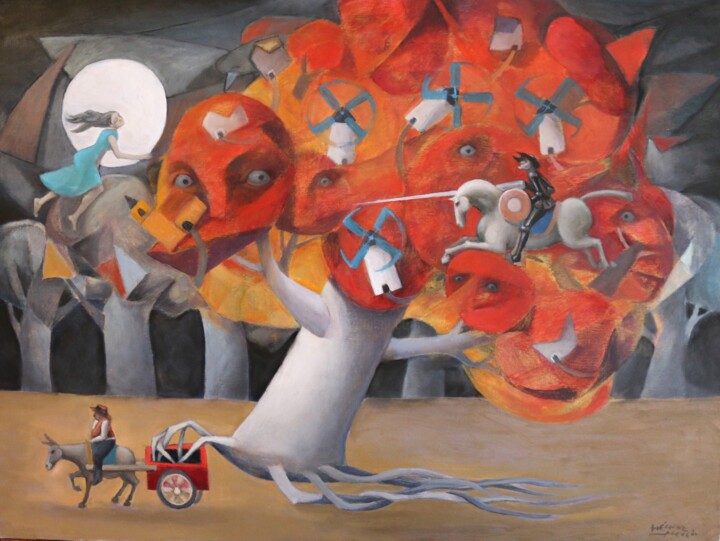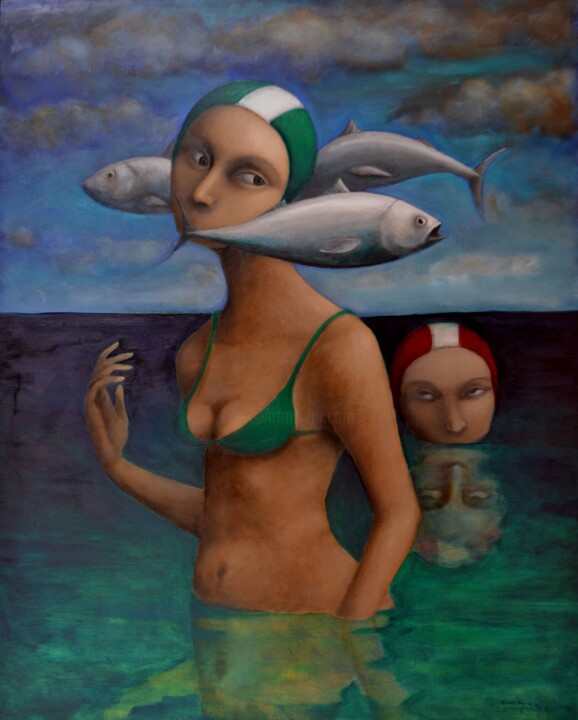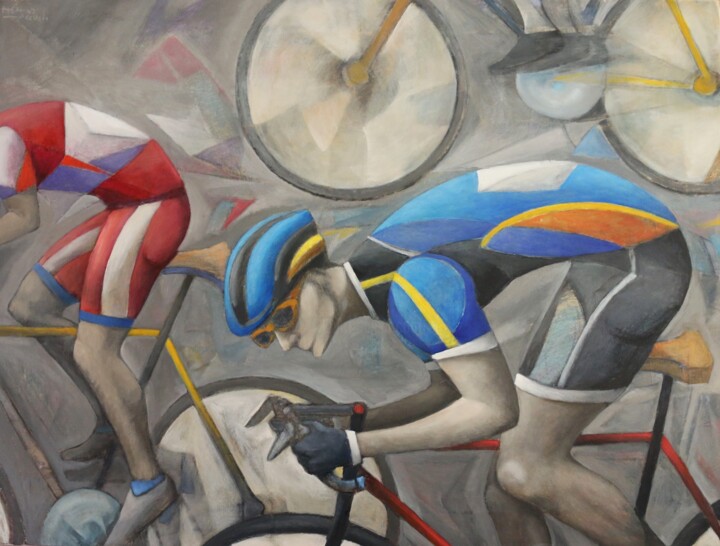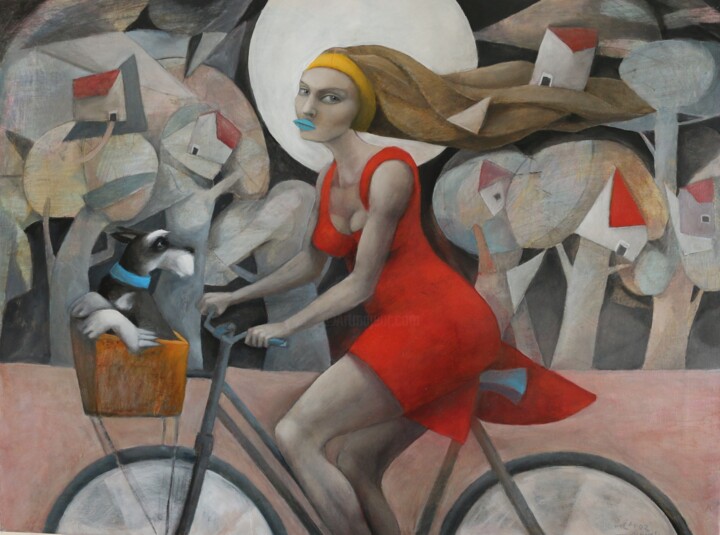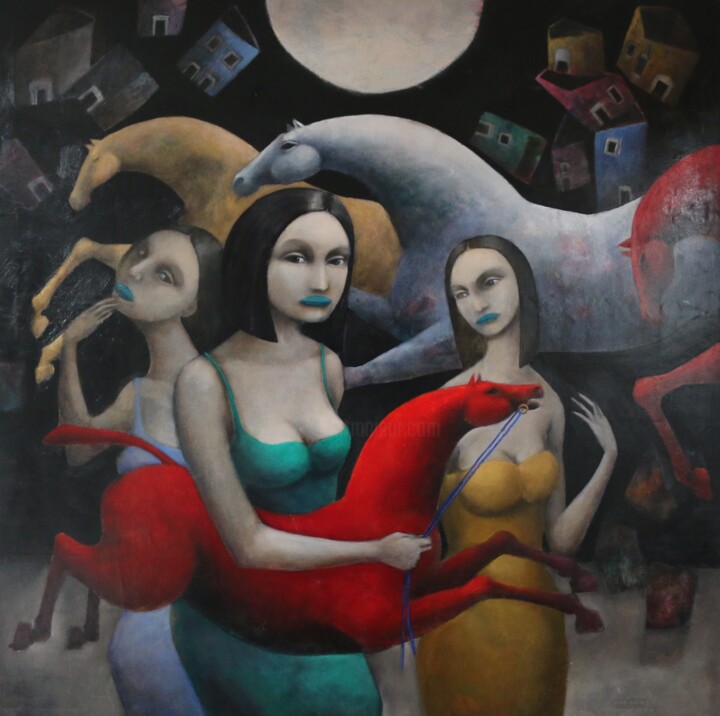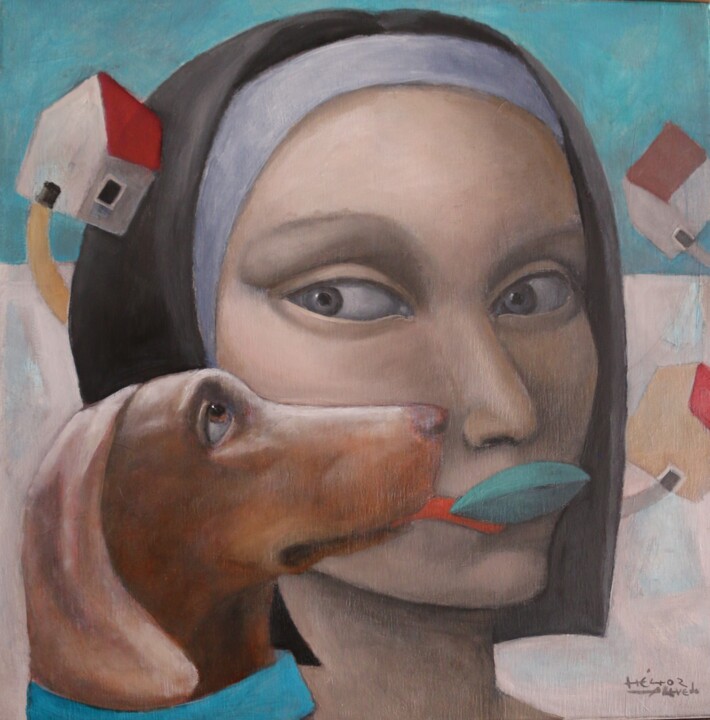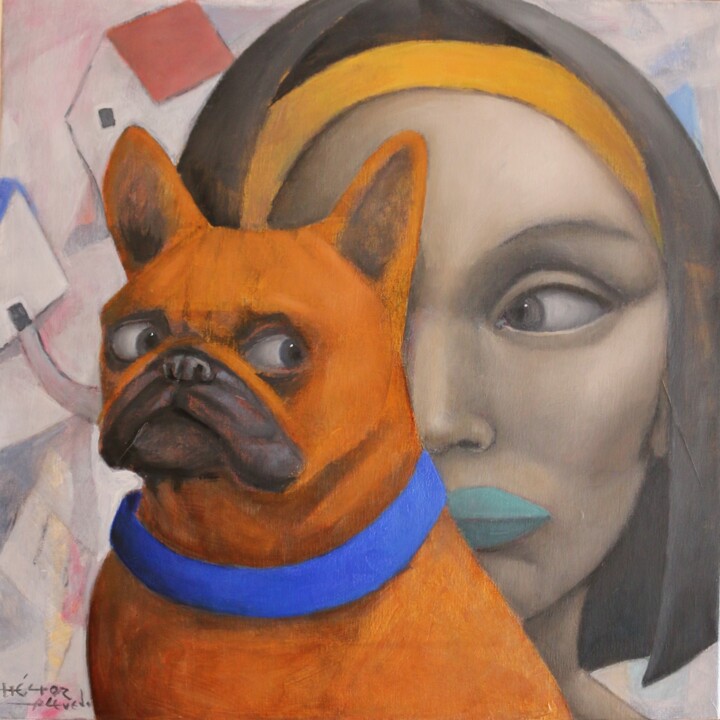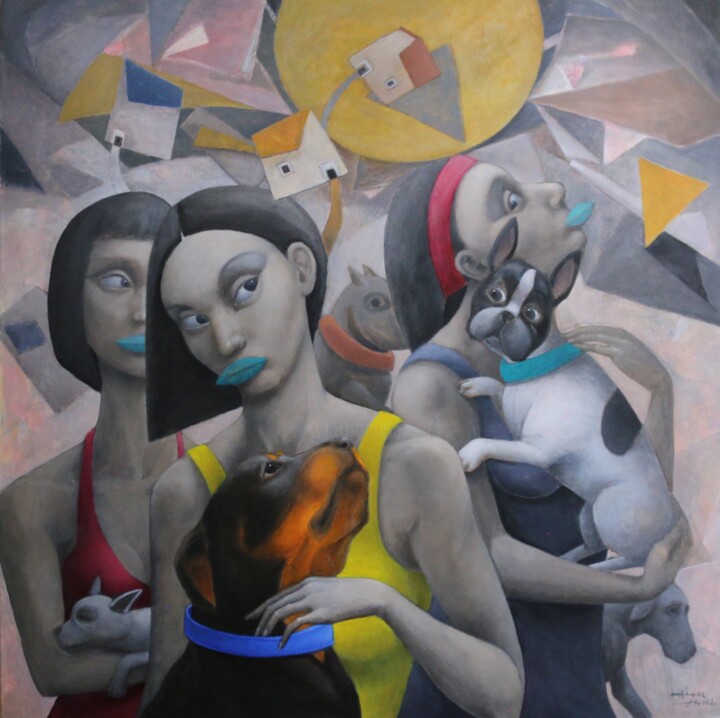What made you approach art and become an artist (events, feelings, experiences...)?
In 1986 I was studying Engineering in the city of Lima, in those years Peru was plagued by an economic crisis and a terrorist violence never before experienced, it was when, walking through the downtown area of Lima I arrived at the School of Fine Arts of Peru, I entered and was trapped in space, it was a magical place, the sculptures in the corridors gave it a special solemnity and breathed a lot of peace in the amplitude of its old workshops. That's when I decided to apply and study Plastic Arts.
What is your artistic career, techniques and themes that you have experimented to date?
In painting I have worked with oil, for a while I used beeswax and now I use mixed technique (oil and acrylic). My subject matter is varied with some glimpses of surrealism and magical realism. I also make sculptures modeled in clay and then cast them in bronze.
What are the three aspects that differentiate you from other artists and make your work unique?
My work is a reflection of my life experience. Through these long years of pictorial experience, it has a peculiar handling of color, through glazes I am interested in achieving more intensity, brightness and expressive force to color. At the same time I look for harmonies and a symbolic language.
Where does your inspiration come from?
My inspiration comes from the language of dreams. Since I was very young my relationship with them comes through my mother, she used to tell her dreams in the mornings, at breakfast time, which in some cases were premonitory and for me they were dreams rich in symbols and images, which I was nourished by this symbology and relate them to certain personal codes. Then I became a kind of dream interpreter for my family. This familiarization with symbology is what allows me to develop my work.
What is the intention of your art, what visions, sensations or feelings do you want to evoke in the viewer?
The intention is to transmit through metaphor and symbolism, sensations, ideas, reflections on different themes, each work is delimited in a different context. I want the viewer to reflect on a specific theme and enrich the work with different conclusions.
What is the process of creation of your works: spontaneous or with a long process of preparation (technique, inspiration in art classics or others)?
I tend to use automatism at the beginning of a work, for me it is impossible to work on a blank canvas, for this reason, I stain the canvas unconsciously to then extract some figurative forms and make them more defined, I do not usually make previous sketches. Then my work becomes more analytical and reflective in a conscious way, this is where symbols, metaphors and associations appear.
Are there any innovative aspects in your work? Can you tell us which ones?
My work is innovative because it has a very personal symbology drawn from my life experience, in it I give special emphasis to the looks of the characters absent of mouth, absence that is covered with the coca leaf, used in high Andean rituals to communicate with the unknown world of the gods. Another peculiar characteristic in my work is the luminosity of the colors and the stylization.
Do you have any format or medium with which you feel more comfortable?
Although I adapt easily to any format, even circular ones, I really enjoy working with large format paintings.
Where do you produce your work, at home, in a shared or private studio? And within this space, how do you organize your production?
At home I always look for a space with good light. I organize my production based on my commitments.
Does your work take you to travel to meet new collectors, to do exhibitions or shows? If so, what do you gain from it?
Undoubtedly, before the pandemic I had my workshop in Lima and I used to travel frequently to the USA and some Latin American countries. Now I am living in Spain and my goal is to move more to European countries.
How do you imagine the evolution of your work and your figure as an artist in the future?
In the future I would like to continue perfecting my technique in color and delve deeper into the symbolic language of dreams. Participating in international events and thus being able to reach more people through my art.
What is the theme, style or technique of your latest artistic production?
The theme of my latest exhibition "The pleasure of glances" revolves around the aesthetics of selfies represented in social networks and the symbolic language of dreams and myths. As the world of dreams my work can be understood as the representation of a wonderful real world, built with surreal elements to narrate realities and conjunctures. I do not paint dreams, I use the language of dreams to access the subjectivity of the viewer.
Can you tell us about your most important exhibition experience?
In October 2021 I participated in the XIII International Biennial of Florence- Italy, obtaining the IV prize in painting and in April 2022 I participated in the V International Biennial of Contemporary Art of Argentina where I obtained the 1st prize in painting, both experiences were very rewarding in my artistic career because I shared the space with excellent artists from all over the World and know their proposals.
If you could create a famous work in the history of art, which one would you choose? And why would you choose it?
Picasso's Guernica because it summarizes, in simple strokes, the atrocity of war and the decadence of the human being.
If you could invite a famous artist (dead or alive) to dinner, who would it be? How would you propose to spend the evening?
I would invite Sandro Botticelli to dinner at a very colorful table in front of the sea, with a Peruvian pisco sour and cebiche as a starter, and I would ask him about the magic of color in his painting and his extraordinary mastery of glazes.


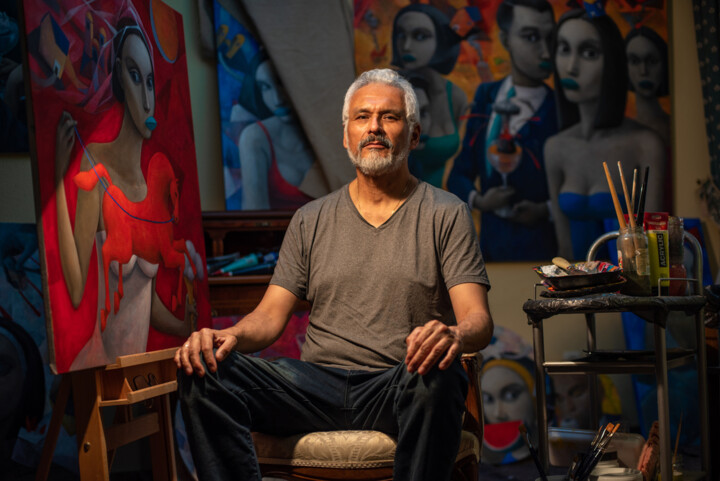


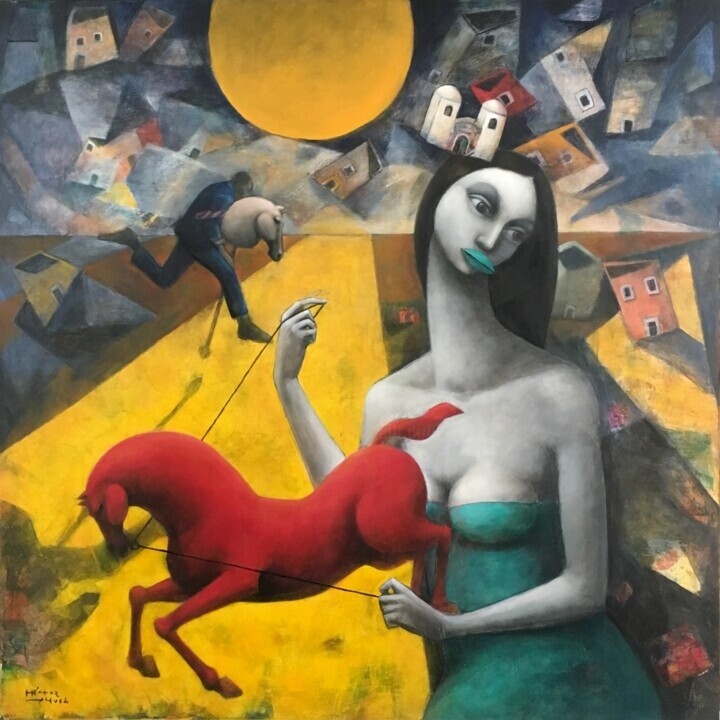

 Olimpia Gaia Martinelli
Olimpia Gaia Martinelli



